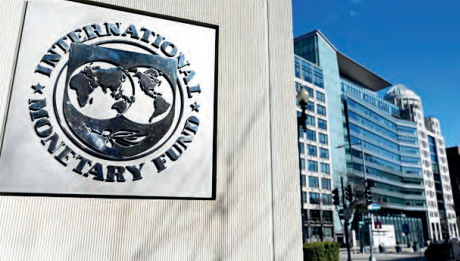
By JACKTONE LAWI
Kenya’s economy is projected to face challenges and it might be hard for people and businesses to see steady growth or stability in the near future, according to new findings by Pan-African market insights firm, Stears.
The firm says that the political uncertainty in Kenya, driven by the push to impeach Vice President Rigathi Gachagua and dissatisfaction with President Ruto’s handling of police brutality during the July protests, is significantly influencing the economic landscape.
The report explains that recent actions are happening because of an unfair policy situation, which is causing negative investor sentiment. Kenya’s credit rating has been downgraded to “junk,” meaning it’s seen as a risky place to invest.
“Overall, Kenya’s economic landscape will remain complex in the near term, especially as we anticipate the IMF’s funding decision amid unmet loan conditions,” said Stears in its monthly update.
The analysis shows that the outcome of the IMF Fund’s review in September will largely shape Kenya’s economic prospects.
“There are bright spots to consider, especially as global commodities prices increase, possibly supporting export earnings from essential commodities like tea and coffee for the country,” the report says in part.
The analysts say these changes to reform efforts have delayed the expected $800 million (Sh103.2 billion) IMF disbursement which was due in September. The Fund is set to review and monitor the situation closely, should there be room for adjusting the conditions of the loan agreements with Kenya.
Despite the current usable reserves standing at $8.2 billion (Sh1.06 trillion) enough to maintain 4.2 months of import cover, the report says there is still the uncertainty around Kenya’s fiscal coffers, increasing debt sustainability and repayment concerns.
According to the IMF, Kenya’s total debt has grown four times in the last decade, ballooning to over 70 per cent of GDP, above the 55 per cent threshold for developing economies.
“Kenya is at risk of high debt distress. Delays in IMF funding are triggering fresh borrowing conversations from other multilateral lenders, including the UAE. Kenya is in talks with the UAE for $1.5 billion to support its public finances,” the findings say.
“We expect these conversations to be successful, temporarily supporting government revenue.”
However, the risk of a possible fallout from the IMF’s reforms looms, pointing towards high interests attached to fresh loans as risk premiums in the case of a default.
The debt situation in Kenya amid lean government revenue is expected to impact the currency in the coming months, barring significant improvements.
Notably, there is a chance that the 16 per cent year-on-year increase in foreign exchange reserves will support the Central Bank of Kenya’s (CBK) efforts to defend the currency in the coming months.
“Still, we foresee currency pressures, mainly because we do not expect sustained interventions in the forex market. After gaining 0.58 percent month on month in August, the Kenyan shilling marginally lost -0.02 percent to close the month at Sh129.2 against the green buck in September.”
However, the month-on-month inflation trend paints a different picture of Kenya’s inflation land scape. Inflation for the month of October dropped to 3.6 per cent.
“Considering that over 70 per cent of Kenyans are low-middle income earners, we expect consumption patterns to favour necessities like food over other expenses. It also points to the continuation of the Kadogo (sachet) economy.” Stears noted.
For business owners, especially within the consumer goods sector, this means that a substantial recovery in consumer demand towards pre-Covid or pre-Ukraine war levels is unlikely in the short term ( 3-6 months).












